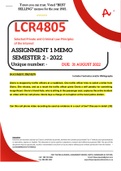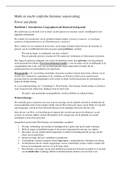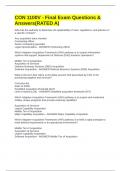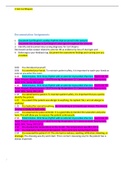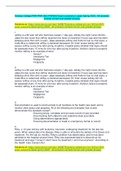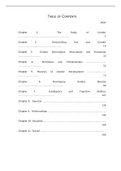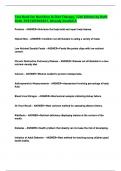Exam (elaborations)
LCR4805 ASSIGNMENT 1 MEMO - SEMESTER 2 - 2022 - UNISA ( WITH DETAILED FOOTNOTES AND A BIBLIOGRAPHY)
LCR4805 ASSIGNMENT 1 MEMO - SEMESTER 2 - 2022 - UNISA ( WITH DETAILED FOOTNOTES AND A BIBLIOGRAPHY) Assessment 1 Gloria is stopped by traffic officers at a roadblock. One traffic officer tries to solicit a bribe from Gloria. She refuses, and as a result the traffic officer gives Gloria a stiff...
[Show more]
